Oh the weather outside is so frightful… While the weather might have made a mess of things, one of the good things it does is allow one to quickly look at their house to spot some hidden issues. As you may recall from science class, the second law of thermodynamics, states that heat moves to cold. In order to prevent that we add layers of clothes on, or in the case of our houses, we add layers of insulation to help hold the heat in. Now one other quick point, it doesn’t matter how many layers of clothes we have on, if we have not fully covered every inch and used a wind breaker to prevent the wind blowing through the material – we are going to be cold, misreable & loose heat. Needless to say, the same principle also applies to houses.
Yesterday, I finally got a chance to take a little trip through Cullman after that snowstorm shut everything down and snapped a few pictures to help illustrate the points above. At this time, most roofs still had about 4” of snow fully covering them, as one would expect given the temperature outside & lack of sunlight.
Older houses are supposed to be drafty, not well insulated, and expensive to heat and cool, right? Well in the case of this one, the answer would definitely be a yes. Fortunately, though, it does not have to be that way with some air-sealing and insulating work being done. Just one block down, is an 1879 house featured on our main site with a full 4” of snow over the majority of the roofs, with the exception of the cathedral portions on the second story. Those areas were showing signs of melting, but I do not feel bad about that, as it was not an area we addressed in the original remodeling project. (Sorry, no pics as I had vehicles behind me)
Let us just ignore the improperly cut trees, and instead focus on the issues with this newer house. One can just see the money & heat coming through that roof. Fortunately, for them, we do not live further north or they would probably be dealing with some major damage caused by ice dams as the melting snow water rushes down and refreezes on the eaves.
How this for an interesting one – you can spot how well the original structure is doing, while the two bump outs are sadly not up to par. One other issue is the two bay windows, where if I had to guess; I would say that they were not even insulated, or someone just jammed some fiberglass in there willy-nilly.
Well, I guess we could label this one under – we almost got it right. I remember watching this one getting built about a year & a half ago & cringing at some of the details. While it appeared that the builder knew and cared about the engineering and some of the science associated with building it, the devil as they say is in the details.
What an interesting older house with an un-insulated turret. It appears that they had some insulation added, but did not do anything with the turret, and they missed air sealing and/or insulating a few other hard to get areas.
Speaking of details, wow what a mess, and to think it is only a few years old
This one does not surprise me to much, as I had snapped a few pictures a couple of years ago after the first freeze, when whole sections of the brick façade came crashing down. Apparently though, it appears that the two added since were done a little better.
See I wasn’t kidding about the bricks & this one was taken after a big freeze as I recall
I know we live in the south folks, but yes we still do get snow here & at $4 a clip (one is generally placed every panel or 2’), snow guards are cheap insurance in case of storms like these, especially if you have gutters.
If you have a commercial building, you might definitely consider investing in some in cases where the snow or ice could come crashing down on parked vehicles or your customers walking to your store.
Needless to say, even with all the bad, there are some pretty good signs out there including a few houses built recently that looked like they had gotten the details right. While snow is a great diagnostic tool, it unfortunately isn’t available on demand and not the best diagnostic tool out there to make sure your builder got the details right. To learn more about the diagnostics tools used or how to verify that the work is or was done properly – you might want to check out our site on Alabama Green Building Services & Solutions.
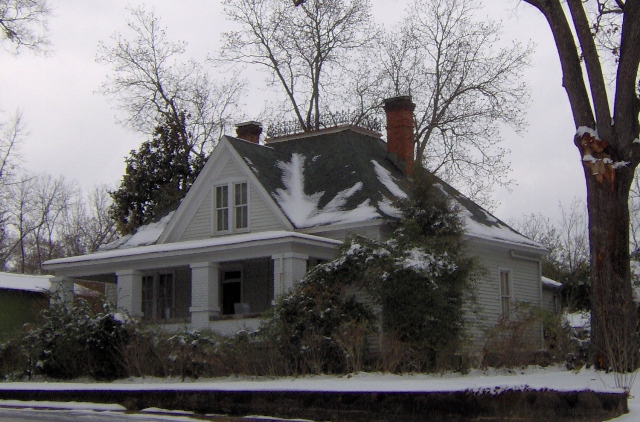
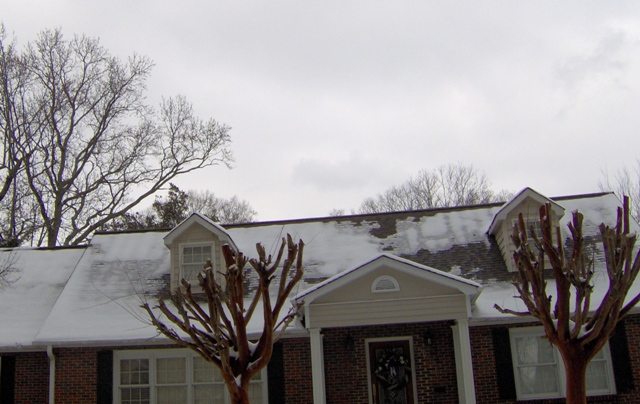
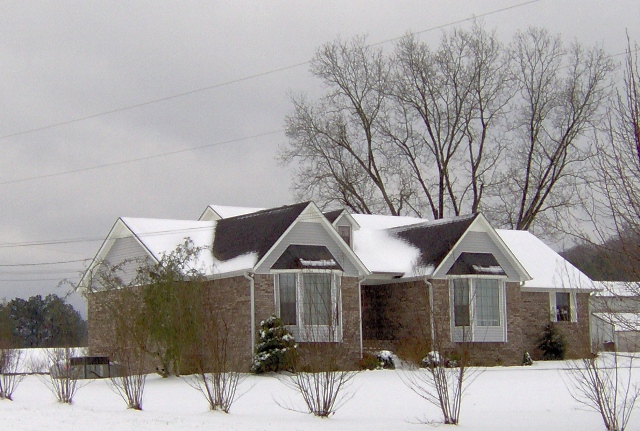
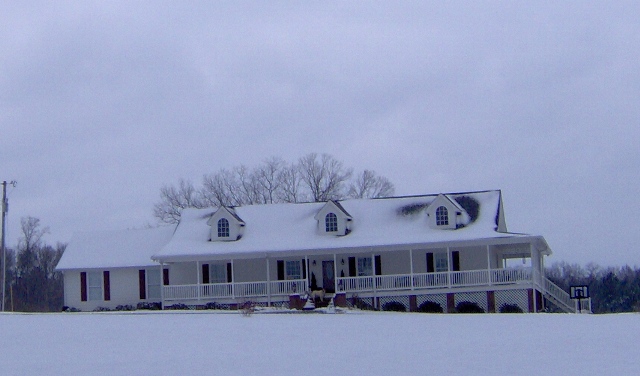
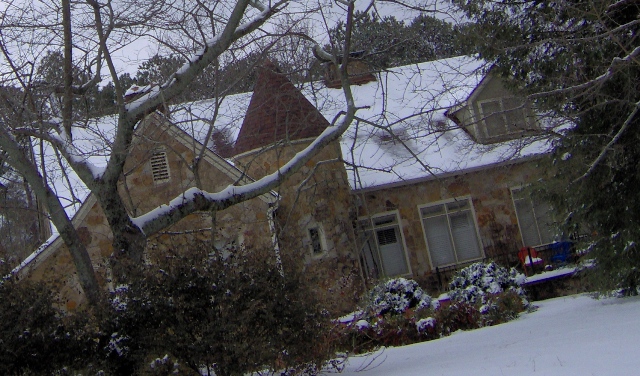
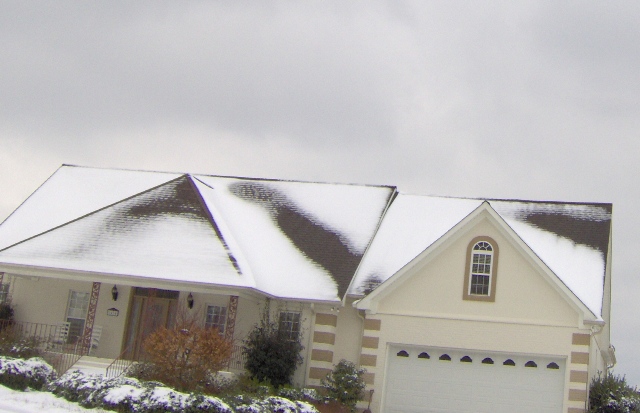
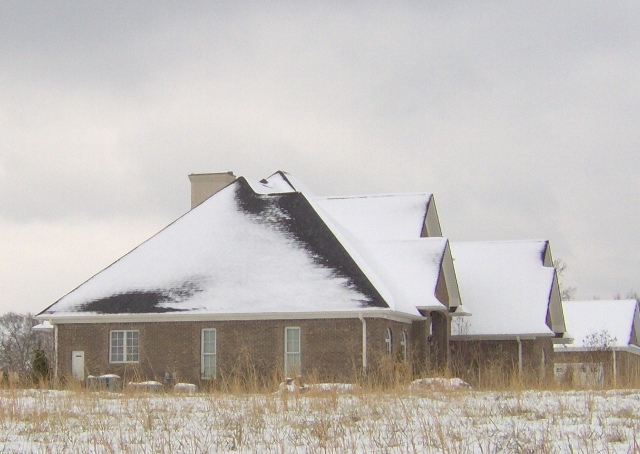
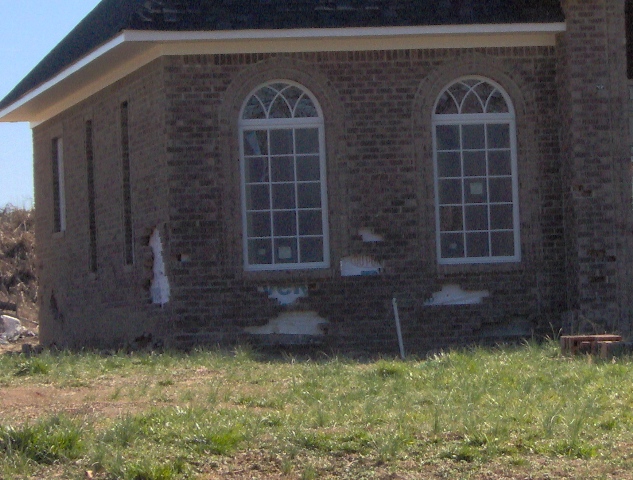



Not all of those pictures can be attributed to heat loss. Many times the wind will place snow thicker in some places and clears it in others (they-got-it-mostly-right.jpg).The breeze was from right to left in that image. Then when a little sun hits the dark roofing, those spots heat up first. Now the pictures where you can see the framing structure below the roofing outlined with snow is definite heat loss (money-money-money-lost.jpg).
Thanks Jeff, those are some very good points on wind and other factors affecting one trying to diagnose the issues. Granted if we had any wind or sunshine, I would tend to be wondering if that was a factor. However I can pretty much rule those factors out based on the weather, what I did see, and in some cases by simply looking at similar houses nearby.
The one you choose, is a little trickier as the houses nearby don’t offer any help based on terrain, nearby trees, orientation, etc… While it is harder to tell using these resized pictures, their is ice visible from melting, snow actually is fully covering the dormer on the windward side of the first dormer on the left, while it is completely missing on the second one where there is less melting above it & a mix on the third one which shows more melting than the middle one.
I never thought about or recognized the relationship between snow patterns & heat loss until I started reading your info and that of Energy Vanguard. Quite interesting. Makes me want to go check my place in Boulder to see if we got it right when we added the 2nd floor. Thanks so much for making this topic easy for a non-pro to understand!
sdaed duns too 1pp sno wi stno ebest thign si evfks
also goign to gmcomet of dig idncato
I never thought about or recognized the relationship between snow patterns & heat loss until I started reading your info and that of Energy Vanguard. Quite interesting. Makes me want to go check my place in Boulder to see if we got it right when we added the 2nd floor. Thanks so much for making this topic easy for a non-pro to understand!
also goign to gmcomet of dig idncato
sdaed duns too 1pp sno wi stno ebest thign si evfks
Not all of those pictures can be attributed to heat loss. Many times the wind will place snow thicker in some places and clears it in others (they-got-it-mostly-right.jpg).The breeze was from right to left in that image. Then when a little sun hits the dark roofing, those spots heat up first. Now the pictures where you can see the framing structure below the roofing outlined with snow is definite heat loss (money-money-money-lost.jpg).
Thanks Jeff, those are some very good points on wind and other factors affecting one trying to diagnose the issues. Granted if we had any wind or sunshine, I would tend to be wondering if that was a factor. However I can pretty much rule those factors out based on the weather, what I did see, and in some cases by simply looking at similar houses nearby.
The one you choose, is a little trickier as the houses nearby don’t offer any help based on terrain, nearby trees, orientation, etc… While it is harder to tell using these resized pictures, their is ice visible from melting, snow actually is fully covering the dormer on the windward side of the first dormer on the left, while it is completely missing on the second one where there is less melting above it & a mix on the third one which shows more melting than the middle one.